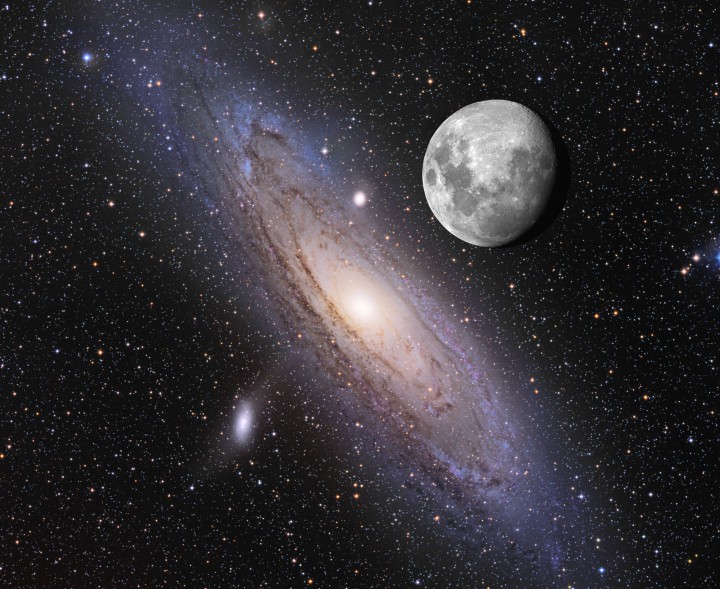Credit & Copyright: Adam Block and
Tim Puckett
Explanation:
The Great Spiral Galaxy
in Andromeda (aka M31), a mere 2.5 million
light-years distant,
is the closest
large spiral to our own Milky Way.
Andromeda is visible to the unaided eye as a small, faint, fuzzy patch,
but because its surface brightness is so low, casual
skygazers can't
appreciate the galaxy's impressive extent in planet Earth's sky.
This entertaining composite image compares the
angular size
of the nearby galaxy
to a brighter, more familiar celestial sight.
In it, a
deep
exposure of Andromeda, tracing beautiful blue star
clusters in spiral arms far beyond the bright yellow core,
is combined with a typical view of a nearly full Moon.
Shown at the same angular scale, the Moon covers about 1/2 degree on the
sky, while the galaxy is clearly several times that size.
The deep Andromeda exposure also includes two bright satellite
galaxies, M32 and
M110 (bottom).
1999 2000 2001 2002 2003 2004 2005 2006 2007 2008 2009 2010 2011 2012 2013 2014 2015 2016 2017 2018 2019 2020 2021 2022 2023 2024 2025 |
Yanvar' Fevral' Mart Aprel' Mai Iyun' Iyul' Avgust Sentyabr' Oktyabr' Noyabr' Dekabr' |
NASA Web Site Statements, Warnings, and Disclaimers
NASA Official: Jay Norris. Specific rights apply.
A service of: LHEA at NASA / GSFC
& Michigan Tech. U.
|
Publikacii s klyuchevymi slovami:
Andromeda galaxy - Moon - Tumannost' Andromedy - Luna
Publikacii so slovami: Andromeda galaxy - Moon - Tumannost' Andromedy - Luna | |
Sm. takzhe:
Vse publikacii na tu zhe temu >> | |
